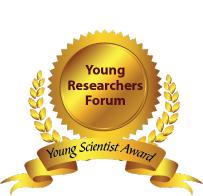Protein Evolution
Proteins are the essential building blocks of living cells; indeed, life can be viewed as resulting substantially from the chemical activity of proteins. Because of their importance, it is hardly surprising that ancestors for most proteins observed today were already present at the time of the 'last common ancestor', a primordial organism from which all life on earth is descended. Proteins are strings of amino acids transcribed from genes, and they typically fold into a particular shape to perform some function in a living system. Proteins evolve when one amino acid is substituted for another.
Proteins are strings of amino acids transcribed from genes, and they typically fold into a particular shape to perform some function in a living system. Proteins evolve when one amino acid is substituted for another. Amino acid substitutions occur frequently as species evolve from a common ancestor. In 1965 Emil Zuckerkandl and Linus Pauling observed that the rate of change in the amino acid sequence of hemoglobin was linear in time across species. This led to the idea of a molecular clock, or constant underlying rate of change that characterizes the evolution of a protein.
- Peptide synthesis
- Protein mutation
- Bio-physics models of proteins
- Protein evolution stages & domains
- Protein engineering
Related Conference of Protein Evolution
21th World Congress on Tissue Engineering Regenerative Medicine and Stem Cell Research
16th International Conference on Human Genetics and Genetic Diseases
19th International Conference on Genomics & Pharmacogenomics
Protein Evolution Conference Speakers
Recommended Sessions
- Animal Evolution
- Chromosomal Evolution
- DNA & Protein Substitution
- Driving forces of Evolution
- Genome Architecture
- Genome Evolution
- Molecular Evolution
- Molecular Genetics
- Molecular Oncology
- Molecular Phylogenetics
- Nucleic acid Evolution
- Plant Molecular Evolution
- Protein Evolution
- Role of ribosome and mitochondria
- Transcriptomics
Related Journals
Are you interested in
- 3D Bioprinting, Organ Fabrication & Bioartificial Tissues - Stem Cell 2026 (Netherlands)
- Aging Biology, Longevity Science & Cellular Rejuvenation - Stem Cell 2026 (Netherlands)
- Artificial Intelligence and Computational Biology in Regenerative Medicine - Stemgen 2026 (Japan)
- Bioinformatics, AI Models & Predictive Regeneration - Stem Cell 2026 (Netherlands)
- Biomaterials and Nanotechnology in Regenerative Medicine - Stemgen 2026 (Japan)
- Cancer Stem Cells & Targeted Therapeutics - Stem Cell 2026 (Netherlands)
- Cancer Stem Cells and Oncology - Stemgen 2026 (Japan)
- Cardiac, Vascular & Musculoskeletal Regeneration - Stem Cell 2026 (Netherlands)
- Cardiovascular Regeneration - Stemgen 2026 (Japan)
- Clinical Translation of Stem Cell Therapies - Stem Cell 2026 (Netherlands)
- Clinical Trials and Translational Stem Cell Research - Stemgen 2026 (Japan)
- Commercialization, Biobanking & Industry Innovations - Stem Cell 2026 (Netherlands)
- Ethical, Legal, and Social Implications in Stem Cell Research - Stemgen 2026 (Japan)
- Ethical, Regulatory & Quality Control Frameworks - Stem Cell 2026 (Netherlands)
- Exosomes, Extracellular Vesicles & Cell-Free Therapeutics - Stem Cell 2026 (Netherlands)
- Future Trends: Organoids, Bioengineering, and Next-Generation Therapies - Stemgen 2026 (Japan)
- Gene Editing and CRISPR Technologies - Stemgen 2026 (Japan)
- Gene Editing, CRISPR Therapies & Regenerative Genomics - Stem Cell 2026 (Netherlands)
- Induced Pluripotent Stem Cells (iPSCs) and Reprogramming - Stemgen 2026 (Japan)
- Mesenchymal Stem Cells (MSCs) in Therapy - Stemgen 2026 (Japan)
- Regeneration in Neurodegenerative & Spinal Cord Disorders - Stem Cell 2026 (Netherlands)
- Regenerative Approaches in Diabetes & Metabolic Disorders - Stem Cell 2026 (Netherlands)
- Regenerative Dentistry and Craniofacial Applications - Stemgen 2026 (Japan)
- Regenerative Immunology & Immune Modulation - Stem Cell 2026 (Netherlands)
- Regenerative Medicine and Tissue Engineering - Stemgen 2026 (Japan)
- Stem Cell Banking and Cryopreservation - Stemgen 2026 (Japan)
- Stem Cell Biology and Cellular Mechanisms - Stemgen 2026 (Japan)
- Stem Cell Engineering & Cellular Reprogramming - Stem Cell 2026 (Netherlands)
- Stem Cells in Neurological and Neurodegenerative Disorders - Stemgen 2026 (Japan)
- Tissue Engineering, Biomaterials & Smart Scaffolds - Stem Cell 2026 (Netherlands)

